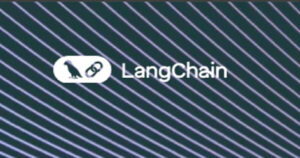Unpacking the Multi-Agent Architecture Revolution: Insights from LangChain’s Latest Benchmarking Study
By Peter Zhang
Publication Date: June 10, 2025
In a groundbreaking study, LangChain has shed light on the performance and scalability of multi-agent architectures, using the innovative Tau-bench dataset. This research highlights the increasing significance of modular systems in tackling complex tasks that necessitate collaboration across various tools and contexts. Here at Extreme Investor Network, we’re excited to delve into the findings and explore the implications for the rapidly evolving landscape of artificial intelligence and blockchain technology.

The Rise of Multi-Agent Systems
LangChain’s analysis, shepherded by Will Fu-Hinthorn, provides a comprehensive overview of the driving forces behind the growing use of multi-agent architectures. The key motivators include:
- Scalability: As tasks increase in complexity, the need for scalable systems that can accommodate numerous tools grows. Multi-agent systems are designed to meet this demand effectively.
- Modularity: Engineering best practices emphasize maintainability and modular design, allowing different developers to contribute to the overarching system, which enhances its capabilities.
This modular approach not only streamlines development but also ensures that adapting to new tools and contexts is more feasible.
Methodology Behind the Benchmarking
The research utilized the Tau-bench dataset, which was tailored to simulate real-world scenarios such as retail customer support and flight booking. To stress-test these architectures, LangChain expanded the dataset to include environments like tech support and automotive—extensively focusing on how well these systems can filter out irrelevant tools and instructions.
Architectural Evaluation
LangChain’s study compared three distinct architectural models:
-
Single Agent: Serving as the baseline, this model relies on a single prompt to access all tools and instructions.
-
Swarm: This architecture allows sub-agents to collaborate and communicate, thereby handing off tasks efficiently to enhance performance.
- Supervisor: Centered around a main agent, the Supervisor model delegates tasks to sub-agents and compiles their responses, leveraging a central control mechanism.
By dissecting these architectures, LangChain provides valuable insights into their operational intricacies and comparative efficacy.
Performance Metrics: Key Takeaways
Notably, the findings revealed that the Single Agent architecture faced challenges when confronted with multiple distractor domains, underscoring its limitations in scalability. The Swarm model, however, outperformed the Supervisor model, attributable to its direct communication capabilities.
While the Supervisor model faced initial performance roadblocks, subsequent refinements in information handling and context management have shown promising results. This scenario raises essential questions: how can we optimize the translation layers without sacrificing task contexts?
Understanding Cost Efficiency
In this study, token usage served as a pivotal metric. As distractor domains proliferated, the Single Agent model exhibited increased token consumption. Interestingly, both the Swarm and Supervisor models maintained consistent token usage, though the Supervisor necessitated a greater token count due to its translation layer—an area ripe for optimization in future iterations.
Charting the Future
LangChain anticipates several avenues for further research, including:
- Exploring multi-hop questions across agents: This could significantly enhance the cognitive capabilities of multi-agent systems.
- Improving single distractor domain performance: A targeted approach to bolster efficiency in specific contexts.
- Investigating alternative architectures: The potential of non-traditional models could offer exciting breakthroughs.
The overarching trend suggests that as multi-agent systems mature, generic architectures may become increasingly worthwhile, balancing ease of development with robust performance.
At Extreme Investor Network, we’re always on the lookout for innovations that shape the future. The insights from LangChain’s study not only inform us about the current landscape but also provoke thought on the next frontiers in artificial intelligence and blockchain applications.
For a more detailed analysis, be sure to check out LangChain’s findings on their blog. Let’s navigate this fascinating journey of technology together!
By presenting these insights, we hope to empower our readers to stay informed about the dynamic developments within crypto and artificial intelligence, ensuring you’re prepared for what’s next on the horizon.

